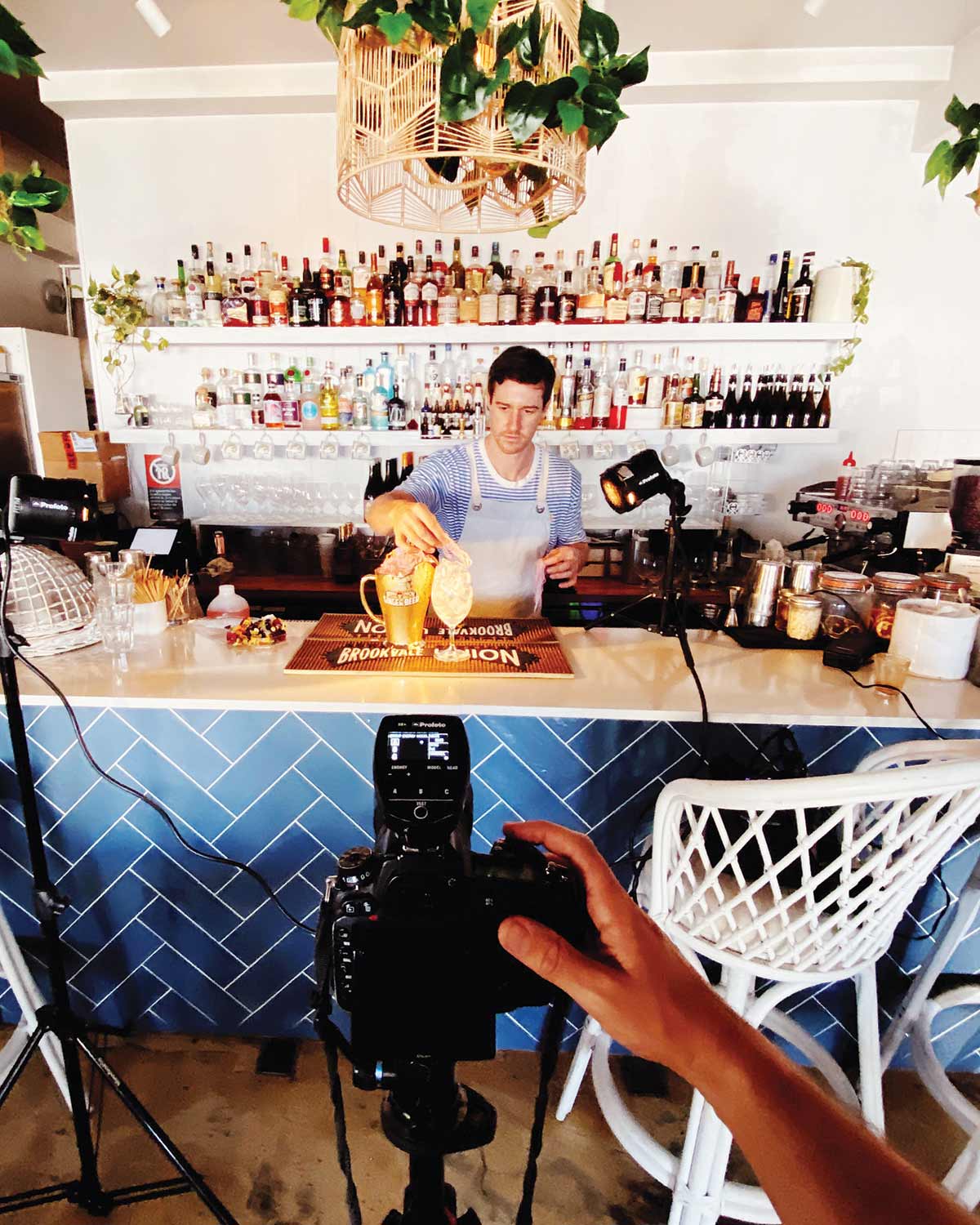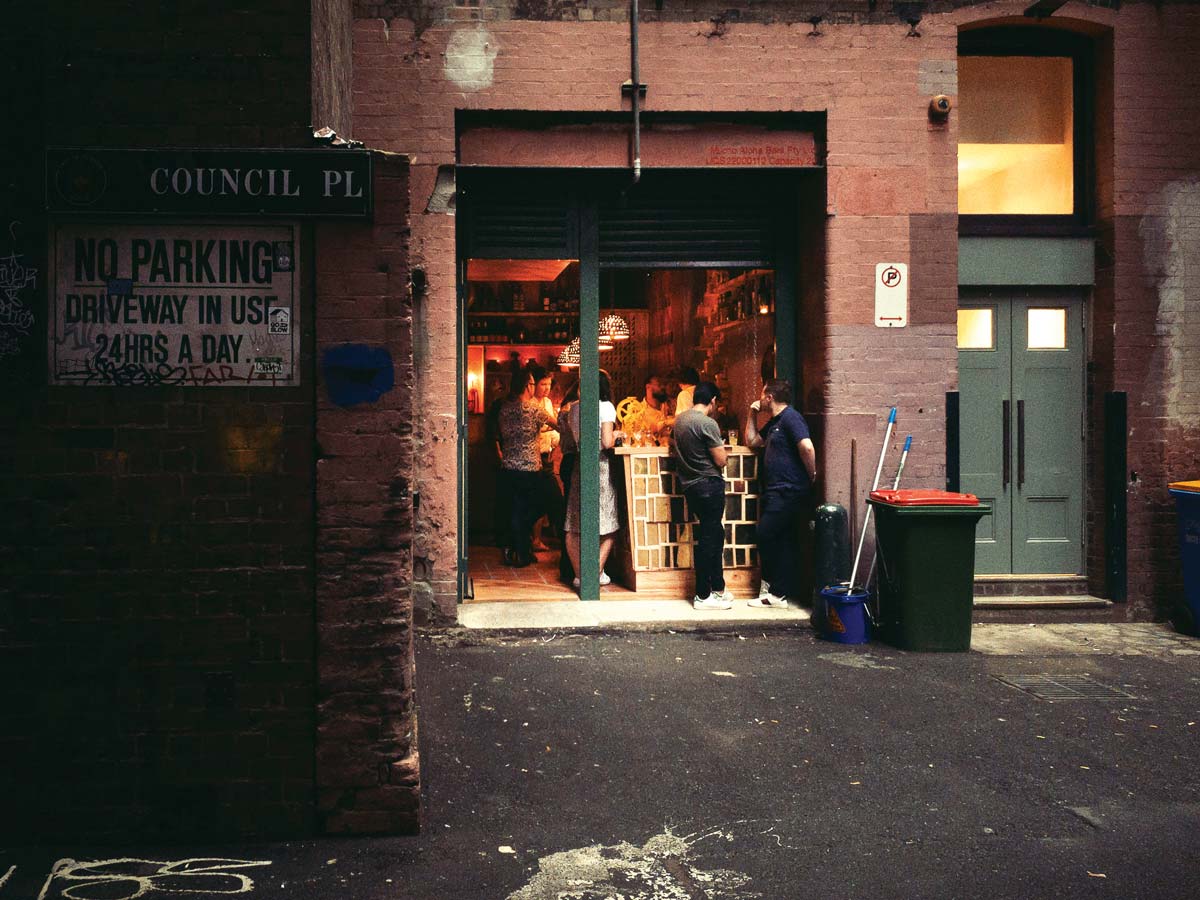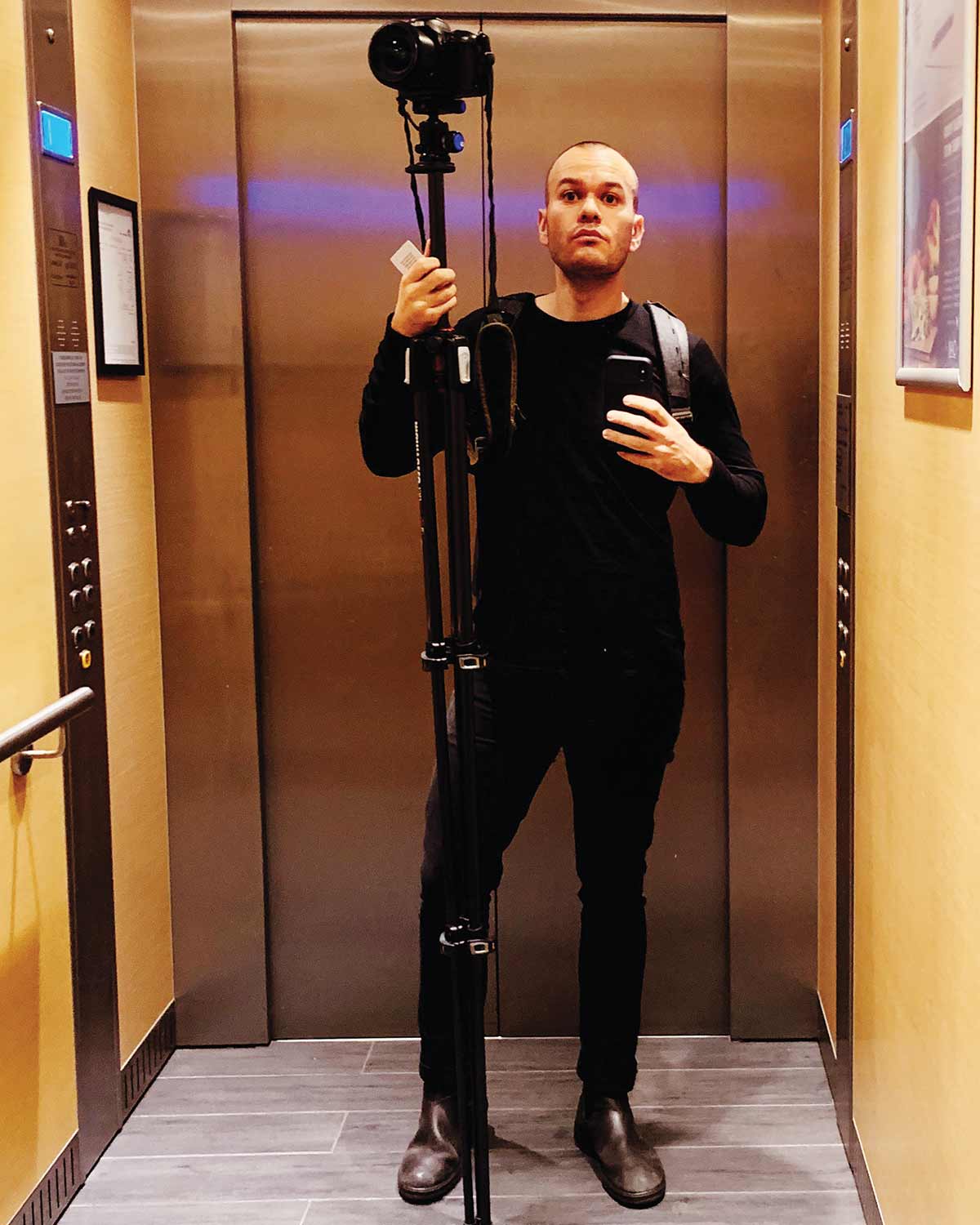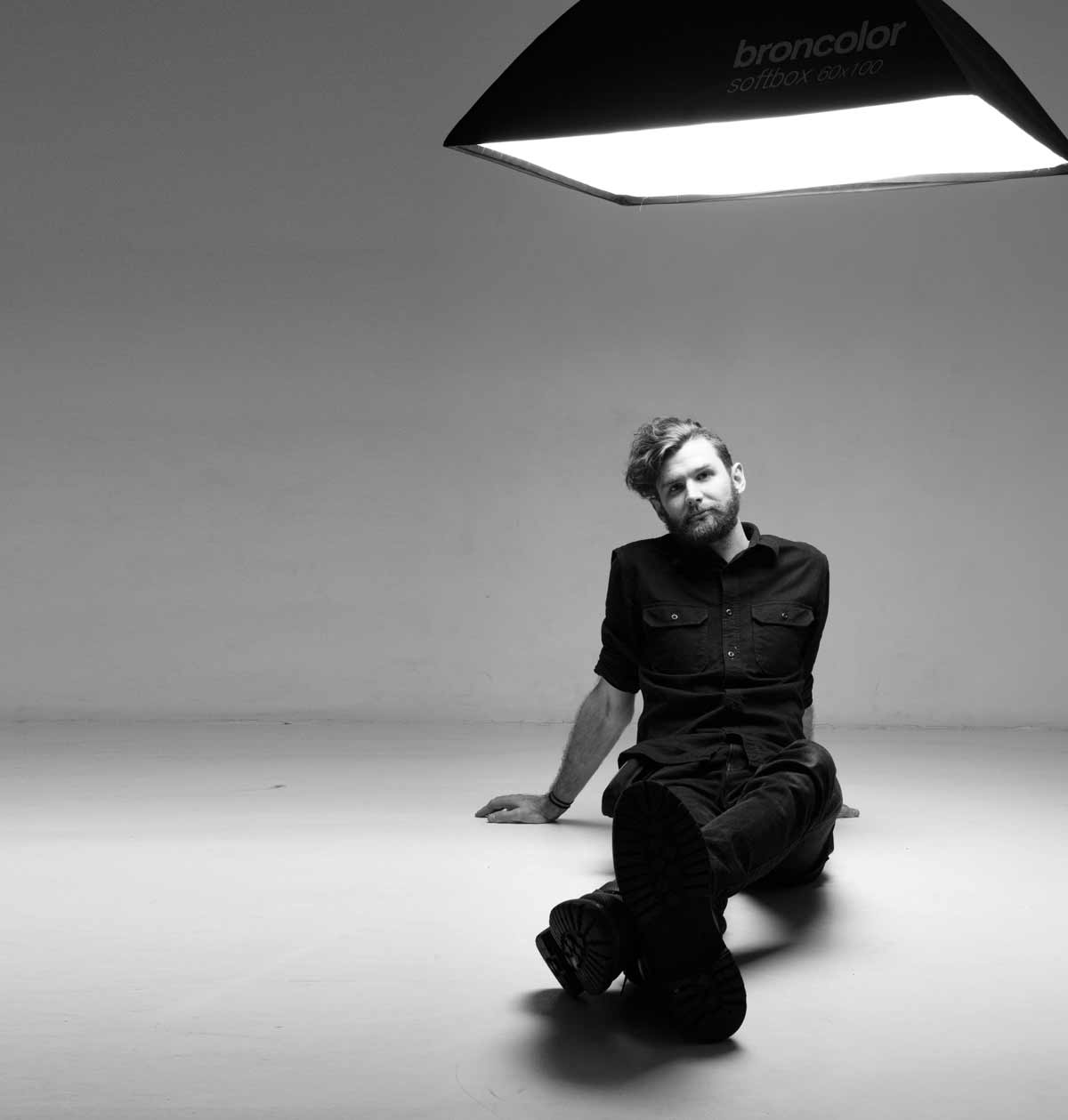
This piece appears in the March issue of Australian Bartender, and was written before the coronavirus began to bite hard on businesses. And though it’s aimed at those wanting to open a bar, there could be something in it for those bars looking to come out of the coronavirus crisis stronger than ever before. With that in mind, we’ve pulled together some tips from our top two photographers to help you along.
Opening a bar is no small thing. You’ve got to find the space, for one; then you’ve got to make it look like a bar, stock the shelves, hire the staff and get the doors open.
And once the place is open, you’ve only just begun. The hard part comes now: how do you get the word out? How do you let the people know what to expect?
You’ll want to get your bar into the media and the best way of doing this to have some photos of your bar, ready to go. They give editors and writers and the public at large a first impression of your bar.
And with any first impression, you want to make it count. So here’s some things you need to remember.

You want high-resolution photos
Generally, the higher the megapixels number on your camera, the higher the resolution the final image will be — and the better it will look in print. It also means that the files you send will be big, ranging from around 1MB to 10MB and higher. Your photographer might send your photos to you in high-res or low-res versions — generally the low-res will be a smaller file size, more suited to displaying on the web. Print magazines, like Australian Bartender, need the images at the full size.
Just keep in mind that these files can be big. If you send these via your email, they’ll take for ever to send, and worse, it’ll take the recipient a long time to download, spoiling that first impression. Instead, use a web-based file sharing service, like WeTransfer, Dropbox or Hightail.
You’ll want the right kit
Photography is an expensive hobby; the gear the professionals use can cost anywhere up to twenty grand, and even once you’ve got the gear you need to know how to use it. The good news is, however, that you can do a lot with the camera on your phone. The problem with using your phone? Generally the built in app isn’t great, and lacks manual controls — get an app like Halide on your phone, one that can export RAW image files that you can manipulate in programs like Photoshop.
Get a range of images
Editors at magazines and websites like Australian Bartender will want to see a range of images of your bar — always get a shot of the bar and back bar proper, but get some in a landscape orientation and some in a vertical orientation. We tend to use images of the space without people in them, but consumer publications often want to see the atmosphere of the space and that often means having people in the shots. A good photographer will get all the angles covered for you.
Flash photography ain’t great
There tends to be lots of shiny surfaces in bars, and subdued and dim lighting. You’ll be tempted to get the flash out to take photos but you want to resist that impulse. Instead, invest in a tripod, and use a slow shutter speed — or better yet, get a professional to do the shooting for you.
Below, we hear from two of our go-to photographers, Sydney based Christopher Pearce and Declan Roache up in Brisbane.

How can new bar owners find a great photographer — what should they look for?
Christopher Pearce: A new bar owner should look for a photographer who has firstly some bar and cocktail work in there portfolio and instagram that you like, and secondly has some knowledge or maybe worked in the bar industry at some point. Finally as most bars are only open from later in the afternoon to late (most bars are dark and moody) your photographers photos of your bar and drinks should look like there shoot in time period.
Declan Roache: Often professional photographers will specialise in different aspects of photography, so don’t expect wedding photographers to be incredible product photographers. Events photographers might be more suited to your venue’s “socials” more so than a dedicated food photographer. Often photographers have a network of other photographers that they’d be happy to refer the job to, if they’re not specialized. Outside of that, searching for a photographer may be as easy as finding a suitable hashtag (eg #yourcityphotographer). There’s also references such as the Australian Institute of Professional Photography which is the leading accredited governing body for the photographic community that has a search function to find an accredited professional. Finding references in editorials like this one can be as easy as flicking to the second page and looking for the “contributors” section.
Do you have any tips for new bar owners taking photos of the bar themselves?
DR: Turn the lights up, get a tripod. Photography comes from the latin photos (light) and graphy (drawing). Venues are notoriously dark in service for ambience, which is actively working against what you need to expose an image. This can be combatted with a little research into long exposure photography, which uses things like a longer shutter speed to achieve a correct exposure (but also introduces camera shake, which is where a tripod is golden). There is an exceptional amount of expensive equipment and the knowledge that comes along with operating it when you hire a professional photographer and it can save a significant amount of headache. After all, you’ve invested hard work and capital in bringing the venue to fruition thus far, wouldn’t you want to show it in the best light you possibly can?
CP: Keep it very simple, you could use iPhone or any other camera. Try to use one directional light source to light cocktails or food, this could be from a light already in the bar or you could buy a cheap LED light from a camera store.

What’s the most important thing to remember when shooting an interior?
CP: The most important three things are to have a wide angle lens to show off all your venue and a tripod so you can take photos that are not dark and blurry and using the correct exposure on your camera. Lastly pick your favourite spots to stand or sit and take your shots from there.
DR: Clean your surfaces, straighten up your tables and chairs. Minimalise a space from clutter. It’s easy for the eye to be pulled out of an image when presented with a beautifully crafted cocktail when there are moisture rings from the bottom of the glass all over the table. It’s the same when presented with a venue photo if there are stools that are out of alignment with each other, the viewer’s eye will be drawn to it and not to what the main focus of the image may be.
Elements of design like leading lines and compositional techniques like the rule of thirds can be hugely beneficial to learn when tasked with shooting interiors.
Do you have an advice for shooting drinks on the old Instagram?
DR: There’s so many things that can set yourself up to succeed. The biggest thing I can suggest is find good light. If you’ve got good light, you’ve got a good shot. Directional, diffused lighting like a single-window during the day can make the perfect source of light for your cocktail shots. Place your cocktail in between yourself and the light source (called “backlighting”) and expose correctly for the cocktail. The more light you have, the better chance you’re going to get a crisp, even image. Window sills are fantastic places to shoot those incredible cocktail shots, just remember to give it a wipe first.


